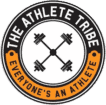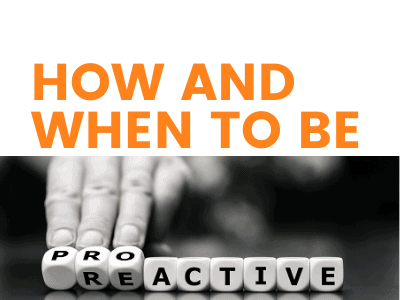The best performers are proactive reactives!
I was walking to the training pitch after a team meeting, talking to a player. This player had been part of international coaching environments with successful teams. As we walked, he told me something that made sense:
“The best coaches are proactive reactives”.
We should always be proactive in developing core skills and team principles while also being reactive to the teams we are playing against or fixing tactical issues.
He highlighted the problems with coaches being too reactive throughout the season, mainly causing a lack of clear messages, goals, trust and leadership.
In a world where most businesses and individuals are predominantly reactive, we need to shift to understanding when we can be proactive and when we have to be reactive.
Proactive
Let’s talk about the areas in which we can be proactive.
Sleep:
By far, the most significant area of health and wellbeing is sleep. We can be proactive in getting better sleep, whether that be duration or quality. As I and many others have said, going to bed at the same time each night has a positive effect on sleep quality and performance.
We need to be proactive in ensuring that we don’t get sucked into a rabbit hole of engagement. Be honest with yourself; if you start watching a film, you will finish it. How many times have you said, “I’ll only watch one episode of this series”, and then three episodes later, we’re trying to get to sleep knowing that we only have six hours before we need to get up? For more information about sleep and human recovery, check out the interview and blog with Nick Littlehales.
Movement:
Humans adapt to the shape they are put in. We are designed to move and change positions during the day. However, so many of us live sedentary lives. COVID-19 has made this even worse. I see senior leaders moving less. Travel had many negatives, but you would need to walk around an airport. In an office, you would perhaps walk to meeting rooms or go out for lunch. Now I see individuals sitting at their screens for up to 16 hours a day, barely taking breaks. We have to be proactive in our planning to ensure that we have time to move. One idea is to book daily meetings with ourselves that cannot be changed.
Also, think about what meetings can be walking based? Do you need to be in front of the screen? Can you have chats on the phone with your colleagues while walking?
I posted the other day about the 8-minute effect. Imagine if you did 8 minutes of mobility work every day for a year. That’s 2920 minutes. Do you think that would affect your ability to move? We need to associate movement with compound interest. Little and often, it has significant results at the end of the day.
Get a stand-up desk; I like the idea of odds and evens. Odd hours you sit and even hours you stand. There is some evidence suggesting that sedentary behaviour can reduce mood and impair cognitive performance (MacEwen, MacDonald & Burr, 2015). Also, avoiding sedentary behaviour could lead to a reduced risk of cardiometabolic diseases and increase calorie expenditure (Buckley, Mellor & Morris, 2014).
Eat:
Input vs output. We need to make sure that we are fueling the body for both health and performance. When work becomes hectic and disjointed, it’s easy not to fuel correctly. Make sure that you invest some time into thinking about meals and snacks during the week. Otherwise, it’s like shopping on an empty stomach. You will reach for the most straightforward and fastest solution. Don’t get me wrong; some fantastic meals and snacks are healthy and quick to prepare. But we need to make sure that we have the ingredients.
The freezer is your friend if you make a great meal. Why not double up on it and freeze half of it. Doing this saves time and ensures we have high-quality meals when we are under time pressure.
Relationships:
One thing that I talk to clients about is their pillars. Their pillars are what makes them, what creates their identity. For example, I am a father, husband, coach, athlete, brother and son. I need to be proactive in spending time on those pillars. Otherwise, depending on one pillar can cause issues in the long run. Imagine if you build your life around work, and something goes wrong.
Reactives
Work:
I understand that we need to be reactive at work. The term agile in business is used so often. The problem with being agile is that changing direction takes energy. In sport, you need to decelerate, have a lateral movement and then reaccelerate. This process seems to be forgotten about in business: we need to have time to recover and process this.
Injury & Illness:
Prevention is the best cure, of course. But too many times, I see people with minor injuries or symptoms who do not take the time to speak to a professional — causing more significant problems and long term issues. React to what is happening.
Training & Exercise:
Autoregulation is a method whereby you adjust your training to how you are feeling. Hence, you’re reactive to your recovery level, allowing you to train or exercise at the right intensity and volume (effort and duration). This has been shown to be an effective method to prescribe training (Grieg & Hemingway, 2020). I am hoping that over the next ten years, there will be a move away from #grindmode. Does grinding make you fit? Maybe. But you walk the line of injury and poor health. Do you need to grind to improve? No, you don’t.
Summary & Research
Proactive vs Reactive. We need to be both in all aspects of life to help us reach and sustain the highest performance in each of our pillars. The more proactive we are, the greater our ability to be reactive when the time comes. This is an area that I discuss with cognitive athletes and forms the work that we do together in the Cognitive Athlete Programme.
The biggest point to add is that we have an opportunity to react to different situations. We have control over this, but it requires time and practice. Check out the full discussion on our YouTube and Podcast channels.
Lee
Director and Founder
Buckley JP, Mellor DD, Morris M, Joseph F. Standing-based office work shows encouraging signs of attenuating post-prandial glycaemic excursion. Occup Environ Med. 2014 Feb;71(2):109-11. DOI: 10.1136/oemed-2013-101823. Epub 2013 Dec 2
Greig, L., Stephens Hemingway, B.H., Aspe, R.R. et al. Autoregulation in Resistance Training: Addressing the Inconsistencies. Sports Med 50, 1873–1887 (2020). https://doi.org/10.1007/s40279-020-01330-8
MacEwen BT, MacDonald DJ, Burr JF. A systematic review of standing and treadmill desks in the workplace. Prev Med. 2015 Jan;70:50-8. DOI: 10.1016/j.ypmed.2014.11.011. Epub 2014 Nov 28.

